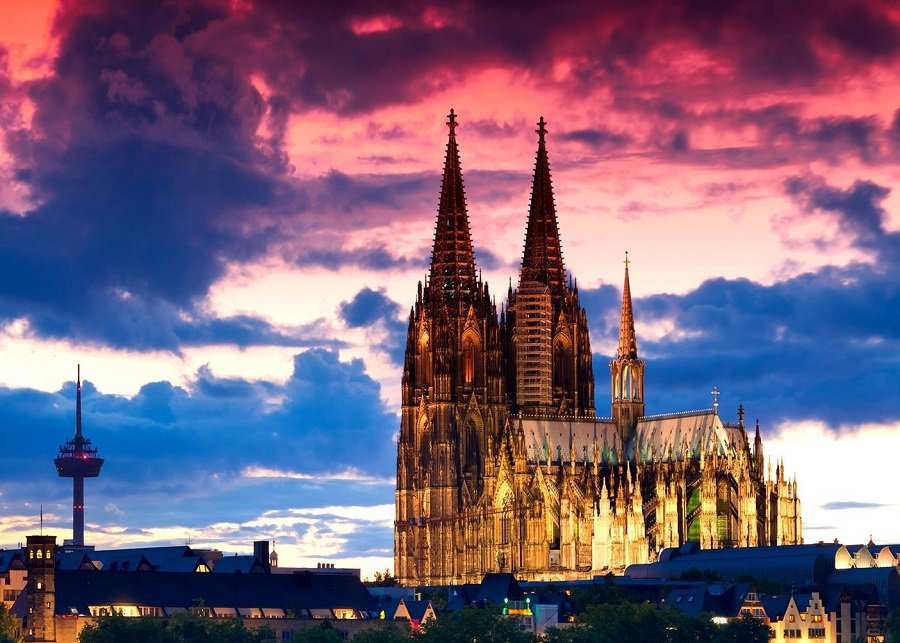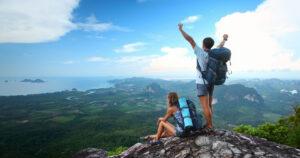History, art, architecture, nature, adventure – you name it, and Germany can offer it to you. I know that sounds like a corny line from some tourism flyer, but it’s true. Germany is not just famous for manufacturing, the Bundesliga and getting doctorate degrees (as far as Indians are concerned) but it’s also ripe for new experiences for the adventurer in you.
So we’ve made a list of must-visit surreal places, you should not miss the next time you visit Germany.
1. Black Forest
Once a bustling hunting ground for Germanic and Gaelic tribes in the Roman era, Black Forest has always maintained its status an abode of mysticism. Germanic folklore owes many of its classic fables to it existence. Spring, summer and autumn seasons are the best trekking seasons, in case you’re planning to experience the surreal nature of one of the most beautiful things Germany has to offer.

2. Rothenburg ob der Tauber
Wouldn’t it be great if, even in 2016, you could walk into a town where every piece of architecture screamed out ‘this is some medieval shit right here’? Well, you don’t have to. Rothenburg ob der Tauber is one of those towns where you feel a little out of place because you’re wearing 21st century clothes in a medieval setting. Not a bad place to play Hansel and Gretel. Try not to bite into the houses though – I mean, just because they look like pastry doesn’t mean they are.

3. Saar Loop
Rivers meandering through forested terrain make for excellent calendar shots. In Germany, the best possible example is the loop the Saar river makes at Mettlach. It’s like nature decided to play a game of snake and the terrain was the playground. Looks unreal, but very real.

4. Neuschwanstein Castle
You cannot make a list about surreal places in Germany without including the castle that inspired Disney’s Sleeping Beauty castle. Seven weeks after the death of King Ludwig II in 1886, Neuschwanstein was opened to the public. The shy king had built the castle in order to withdraw from public life – now vast numbers of people came to view his private refuge.

5. Vineyards near Heilbronn
When you think about alcohol and Germany, wine is probably not the first thing that comes to your mind. But lo and behold, the land of the Oktoberfest also boasts of some terrific vineyards, and some of the most surreal ones are in Heilbronn. If urban Germany doesn’t interest you, try this region for some of the most scenic countrysides.

6. Herrenhäuser Allee
This four-row avenue of lime trees in the Hanover district of Nordstadt, is one of those places where you might be forced to ask yourself the question – Am I in a calendar photo right now? It’s located in George Garden and the roughly 2 km straight line it forms, runs from King Platz to the library pavilion in Berggarten.

7. Zugspitze
At precisely 2,962 metres above sea level, the Zugspitze is the highest mountain in the country and home to three glaciers and Germany’s highest ski resort. The 20 kilometres of ski-runs enjoy a deep covering of natural snow for skiing and boarding for six months of the year.

8. Dachau Concentration Camp
On March 22, 1933, a few weeks after Adolf Hitler had been appointed Reich Chancellor, a concentration camp for political prisoners was set up in Dachau. This camp served as a model for all later concentration camps and as a “school of violence” for the SS men under whose command it stood. In the twelve years of its existence over 200,000 people from all over Europe were imprisoned here and in the numerous subsidary camps. 41,500 were murdered. On April 29 1945, American troops liberated the survivors. Today, parts of the camp have been reconstructed for tourists and galleries have been set up to remind us of what the human race, at its worst, is capable of.

9. Spreepark
This ‘entertainment park’ in former GDR-controlled East Berlin is perhaps the most surreal metaphor for what happened to the East German economy, post reunification. Once the only such park in both the Germanys, this park now resembles a haunted painting – but maybe that’s what draws people to the place now. For those who’ve seen the film Hanna, this park might seem familiar as the climax of the film was shot there.

10. Lichtenstein Castle
If you’re a fan of medieval weapons and armour, you must make it a point to visit the museum in Lichtenstein Castle. Correction – it’s not so much a museum but an actual castle from the medieval era owned by the Dukes of Urach.

11. Königssee
As far as Alpine lakes go, Germany’s Königssee Lake is as good as it gets. It lies just a couple of miles south of the town of Berchtesgaden and is Germany’s deepest and cleanest lake. Due to its picturesque setting, the lake and surrounding parklands are very popular with tourists and hikers. In addition, the lake’s position surrounded by sheer rock walls creates an echo known for its clarity. On boat tours, it has become traditional to stop and play a flugelhorn or trumpet to demonstrate the echo. Formerly demonstrated by shooting a cannon, it can be heard to reverberate up to seven times.

12. Lorelei
Yes, there is a Marvel character named Lorelei, who appears in Thor’s comics, but this is not her. This name of the rock comes from the combination of an old Rhine dialect and a Celtic term, which roughly translates to ‘murmuring rock’. The heavy currents hitting the cliff of the rock and a small waterfall nearby created a ‘murmuring’ sound, which gave this rock its name and also inspired many poems in the early 19th century. Back when people did not know what caused this sound, some believed there were dwarves within the rock and their tinkering caused the sound.

13. Saxon Switzerland
Saxon Switzerland is a hilly climbing area and national park around the Elbe valley south-east of Dresden in Saxony, Germany. Together with the Bohemian Switzerland in the Czech Republic it forms the Elbe Sandstone Mountains. Hugely popular among adventurers who prefer climbing, this park is also famous for what the locals call boofen, which means ‘sleeping under the open sky’. The park has over 1,000 climbing peaks and numerous hollows for adventure junkies to explore.

14. Cologne Cathedral
Beautiful is an understatement when you’re talking about the Cologne Cathedral. Its construction started in 1248 and it was finally complete in 1880. Apart from its exceptional intrinsic value and the artistic masterpieces it contains, Cologne Cathedral testifies to the enduring strength medieval of European architecture.

15. Hohenzollern Castle
One look at Hohenzollern Castle and you might be tempted to think that fairy tales and fantasies are real – that is how surreal this place is. It is located atop Berg Hohenzollern, a 234 m (768 ft) bluff rising above the towns of Hechingen and Bisingen in the foothills of the Swabian Alps of central Baden-Württemberg, Germany.


















